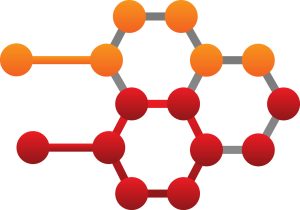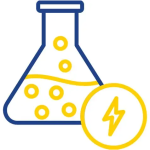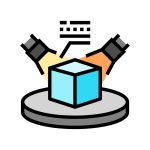Advance Scientific Instrument
From learning to innovation, guided by precision tools
Advanced research instruments are specialized scientific tools designed to investigate complex problems that cannot be solved with basic equipment. They provide highly precise and sensitive measurements, allowing researchers to obtain accurate and reliable data. Because of their advanced technology, these instruments are often costly and found mainly in research institutions, industries, or specialized labs.

Imaging & Visualization
FESEM (Field Emission Scanning Electron Microscope) – surface imaging at nanoscale
TEM (Transmission Electron Microscope) – internal ultrastructure at atomic resolution
- Optical Polarizing Microscope Optical Polarizing – birefringence, crystal and mineral structures
- Inverted Microscope – cell culture and live-cell imaging

Spectroscopy
UV-Vis Spectrophotometer – electronic transitions in molecules
FTIR (Fourier Transform Infrared Spectroscopy) – functional groups in molecules
Raman Spectroscopy – molecular vibrations
NMR Spectrometer – atomic structure & chemical environment
Mass Spectrometer – molecular mass & composition
Atomic Absorption Spectroscopy (AAS) – metal element analysis (trace detection)
- Fluorescence Spectroscopy / Fluorometer – emission after excitation
- Inductively Coupled Plasma – Optical Emission Spectroscopy (ICP–OES) – Measures metal and some non-metal elements

Decomposition / Thermal Analysis
TGA (Thermogravimetric Analysis) – mass change with temperature
DSC (Differential Scanning Calorimetry) – heat flow, melting, crystallization

Chromatography & Separation
GC-MS (Gas Chromatography – Mass Spectrometry) – separates & identifies volatile compounds
XRD (X-ray Diffractometer) – crystal structures
- HPLC (High Performance Liquid Chromatography) – separates liquid mixtures
- HPIC (High Performance Liquid Chromatography) – separates ions and polar molecules
- CHNS/O Elemental Analyzer – bulk elemental composition (C, H, N, S, O)

Mechanical Properties
Universal testing Machine (UTM) – electronic transitions in molecules
Tensile Test → pulls a specimen until it breaks, measuring strength and elongation.
Compression Test → squeezes a specimen to see how it behaves under load.
Flexural (Bending) Test → measures how a material bends until it fractures.

Electrochemical
Potentiostat → controls potential, measures current (voltammetry, batteries, sensors)
Galvanostat → controls current, measures voltage (plating, energy storage)
ZRA (Zero Resistance Analyzer) → measures galvanic corrosion current

Biological
Thermocycler (PCR Machine) – amplifies DNA
QPCR (Quantitative PCR) – quantifies DNA/RNA
- Microplate Reader (ELISA Reader) – Detects biological, chemical, or physical events

Surface & Material Characterization
BET Analyzer (Brunauer–Emmett–Teller Surface Area Analysis) – Measures specific surface area of a material
XRD (X-ray Diffractometer) – crystal structures

Sample Preparation & Preservation
Centrifuge → separates components (density-based)
Freeze Dryer (Lyophilizer) → removes water by sublimation
– Open for outside sample
– Availability: Weekdays, 8.00 AM – 5.00 PM
Advance Scientific Instrument
Ground Floor Block 2,
Faculty of Science and Mathematics
Kampus Sultan Azlan Shah UPSI
Contact person
Ahmad Supian bin Abdullah
Assistant Science Officer C29
Email : supian@upsi.edu.my
Tel. : 05 – 450 7661

